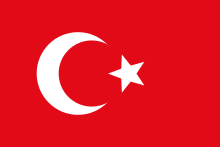Peter Strickland (British Army officer)
Lieutenant-General Sir Edward Peter Strickland KCB KBE CMG DSO (3 August 1869 – 24 June 1951) was a British Army officer who commanded 1st Infantry Division during World War I.
Sir Peter Strickland | |
|---|---|
 Lt. Gen. Sir Peter Strickland | |
| Born | 3 August 1869 Snitterfield, Warwickshire |
| Died | 24 June 1951 Snettisham, Norfolk |
| Allegiance | |
| Service/ | |
| Years of service | 1888–1931 |
| Rank | Lieutenant-General |
| Commands held | North Nigeria Regiment 1st Bn the Manchester Regiment Jullundur brigade 98th Brigade 1st Infantry Division Western Division of the British Army of the Rhine 6th Division 2nd Division British Troops in Egypt |
| Battles/wars | Mahdist War World War I Irish War of Independence |
| Awards | Knight Commander of the Order of the Bath Knight Commander of the Order of the British Empire Companion of the Order of St Michael and St George Distinguished Service Order |
Military career
Educated at Warwick School,[1] Strickland was commissioned into the Norfolk Regiment in 1888 and served in Upper Burma in 1888/1889, on the Dongola expedition in 1896[2] and fighting at the Battle of Atbara and the Battle of Omdurman in 1898.[1] He served in North Nigeria from 1906 and commanded the North Nigeria Regiment in 1909.[2] He served in World War I as Commanding Officer of 1st Bn the Manchester Regiment from 1914 and as Commander of the Jullundur brigade from early 1915 leading it at the Battle of Neuve Chapelle and at the Second Battle of Ypres.[1] He continued his war service as Commander of the 98th Brigade from late 1915 and then as General Officer Commanding 1st Infantry Division on the Western Front from 1916 until the end of the War leading it at the Battle of the Somme and the Battle of Lys.[2]
After the War he became Commander of the Western Division of the British Army of the Rhine[1] and then General Officer Commanding 6th Division in Ireland[2] in which role he survived an assassination attempt by the Irish Republican Army in Cork in September 1920 before assuming the additional responsibilities of military governor for the counties of Munster, Kilkenny and Wexford in January 1921.[1] He was appointed General Officer Commanding 2nd Division in 1923 and General Officer Commanding the British Troops in Egypt in 1927 before retiring in 1931.[2]
From 1917 to 1946 he was the Colonel of the Norfolk Regiment.[3]
Family
In 1918 he married Barbara Cresswell (née Ffolkes); they had a daughter, and there were two daughters from his wife's previous marriage, including Billa Harrod. Barbara Strickland was created a Dame Commander of the Order of the British Empire (DBE) in 1923.[1]
Honours
- DSO: Distinguished Service Order – 1899
- CMG: Commander of the Order of St Michael and St George – 1913
- KCB: Knight Companion of the Order of the Bath (Companion (CB) 1917)
- KBE: Knight Commander of the Order of the British Empire

References
- Peter Strickland at Oxford Dictionary of National Biography
- Sir Edward Peter Strickland Liddell Hart Centre for Military Archives
- "9th (East Norfolk) Regiment of Foot". Regiments.org. Archived from the original on 2 January 2007. Retrieved 8 July 2016.CS1 maint: BOT: original-url status unknown (link)
- "No. 27415". The London Gazette. 11 March 1902. p. 1727.
| Military offices | ||
|---|---|---|
| Preceded by Arthur Holland |
General Officer Commanding the 1st Infantry Division 1916–1919 |
Succeeded by Guy Bainbridge |
| Preceded by Thomas Marden |
General Officer Commanding the 6th Division 1919–1922 |
Succeeded by Post Disbanded |
| Preceded by Richard Butler |
General Officer Commanding the 2nd Division 1923–1926 |
Succeeded by Edmund Ironside |
| Preceded by Sir Richard Haking |
General Officer Commanding the British Troops in Egypt 1927–1931 |
Succeeded by Sir John Burnett-Stuart |